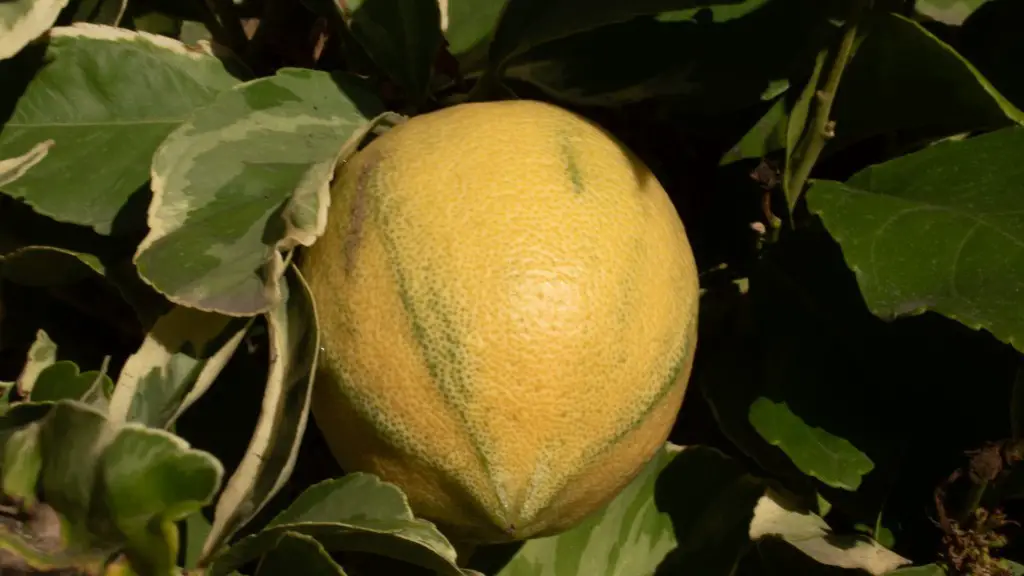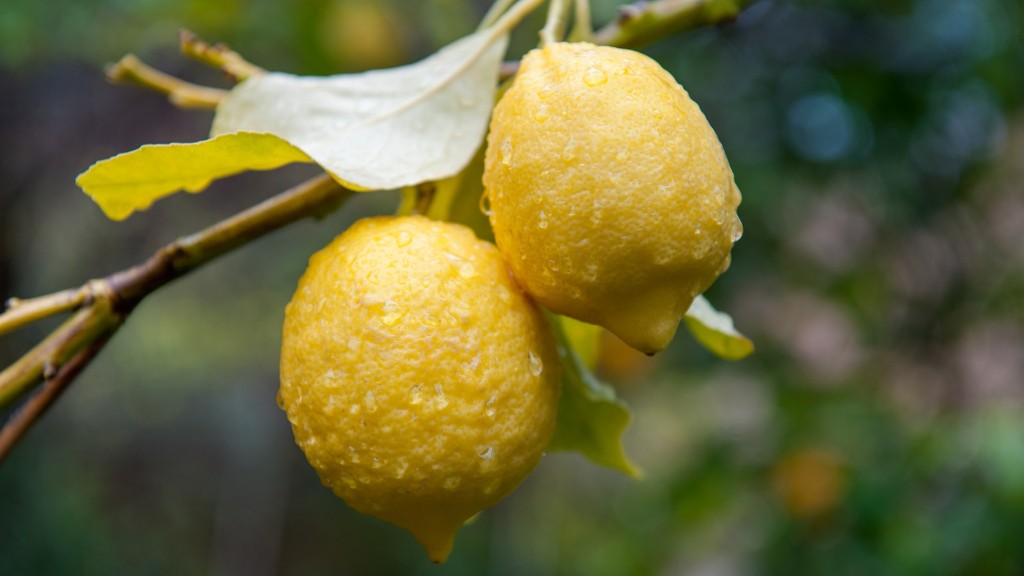Examining the issue of why the leaves on lemon trees are curling up is a complex problem that has only recently been given serious attention. Upon first inspection, it can appear to be an innocuous issue, but understanding the cause of this phenomenon is essential in order to make sure the health of the tree is maintained. This blog post will explore the most scientifically-backed reasons for this lemon tree phenomenon.
Fundamentally, the leaves of any tree curl up in order to defend against environmental stress. These environmental stresses include certain weather conditions, like low humidity or intense sunlight, or external factors such as pests, disease, and nutrient deficiencies. All cause physical changes in the leaves of all trees to some degree, and the extent of the impact depends on the specific causes present.
In the case of lemon trees, the most commonly observed cause for leaf curling is a pest called the citrus leaf miner. This pest is tiny, but can cause significant damage to the leaves of lemon trees. The miner will lay its eggs in the leaf, and when they hatch the larvae will begin to feed on the plant tissue. This will cause the leaves to become increasingly discolored and deformed, and eventually, they will begin to curl up.
Another potential cause of leaf curling is nutrient deficiencies. In particular, mango trees often suffer from a lack of sulfur, iron and zinc, which can prevent the tree from getting enough nutrients to properly feed its leaves and maintain their structure. An additional cause of leaf curling could be water stress, which is caused by either too much or too little irrigation. Too much water can drown the roots and leave the tree deficient in oxygen, and too little water can cause the trees to not receive enough moisture to survive.
The final potential cause of leaf curling on lemon trees is sunburn. Lemon trees have particularly sensitive leaves, and too much sunlight can cause the leaves to be singed or blistered. This will result in discoloration, deformation and ultimately leaf curling as the tree attempts to defend itself from the excessively hot conditions.
Pest-Related Leaf Curling
The citrus leaf miner is the most commonly observed pest that causes leaves to curl up on lemon trees. This pest lays its eggs in the leaves of the tree, and the larvae will begin to feed on the plant tissue, causing discoloration, deformation and leaf curling. To prevent this phenomenon, it is essential to be vigilant in regularly checking the tree for signs of pest infestations and using insecticides and other pest control measures as needed.
Inspecting the tree for discoloration, deformation and yellowing of the leaves can help reveal if an infestation is present. Additionally, observing the tree for changes in the leaves, such as curling or twisting, can also be used as an indicator of a possible pest infestation. Finally, examining the bark for any strange deposits of eggs or larvae can indicate significant pest damage.
Using insecticides during the growing season is the most effective way to get rid of unwanted pests and their damage. These insecticides are typically effective in controlling the insect population and preventing further infestations. Additionally, other methods such as physical removal, using row covers or introducing beneficial insects to predate on the unwanted pests can also be utilized to protect the tree.
Nutrient Deficiencies
Nutrient deficiencies are a common cause of leaf curling in lemon trees, as these trees require a certain amount of essential nutrients in order to properly sustain their leaves. Mangos are particularly susceptible to lacking essential nutrients like sulfur, iron and zinc. To prevent and identify any underlying nutrient issues, it is important to regularly monitor the health of the tree and test for any nutrient deficiencies that may be present.
Signs of nutrient deficiencies in lemon trees include discolored and deformed leaves, small and deformed fruits, and twig dieback. To test for specific nutrient deficiencies, a soil test should be conducted by a laboratory as soon as symptoms of malnutrition become visible. Additionally, fertilizers specifically tailored to citrus trees can be used to supplement any deficiencies that are present.
Another potential cause of nutrient deficiency is when the original soil of the tree has been stripped of its original nutrients due to prolonged use. To restore soil fertility and nutrient levels, adding aged compost to the soil can be beneficial in augmenting lost nutrients. Additionally, adding rock phosphate, as well as other mineral supplements, can help restore fertility to the soil.
Finally, manual or automated irrigation methods, such as drip or sprinkler systems, can help ensure that the tree receives the necessary amount of water to carry out its daily functions and remain adequately supplied with nutrients, in addition to improving the soil fertility. Overwatering is, however, to be avoided, as this may cause the tree to become nitrate-sensitive or potentially drown its roots.
Sunburn
Sunburn is another common cause of leaf curling. Lemon trees have particularly sensitive leaves due to their thin, delicate nature, and too much exposure to the sun can cause scorching and leaf curling as the tree attempts to protect itself from the intense light. To shield the tree from direct sunlight, providing adequate shade is essential.
Applying a sunscreen throughout the day can help protect the leaves from sunburn, while providing shade during the hottest part of the day is also recommended. Pruning can also help the tree regulate the amount of sunlight it receives. Additionally, using sun-repelling blinds or screens to block the bright midday sun can also be helpful in protecting the tree from excessive sunlight.
Finally, providing adequate mulch at the base of the tree can help reduce soil temperature and conserve moisture, preventing any additional stress from developing. Setting up an automated water system, such as a drip or sprinkler system, is also recommended, as this can help ensure the tree has an adequate supply of water and prevent excessive water loss from high temperatures.
Conclusion
Understanding why the leaves on lemon trees curl up requires careful examination of the tree and its environment, as the causes of this phenomenon can range from pests to nutrient deficiencies to sunburn. Of these, the citrus leaf miner is the most commonly observed pest related cause, while nutrient deficiencies are also a common contributor. Sunburn is also a potential cause of this phenomenon, and can be prevented by providing adequate shade, mulch and water to the tree.




